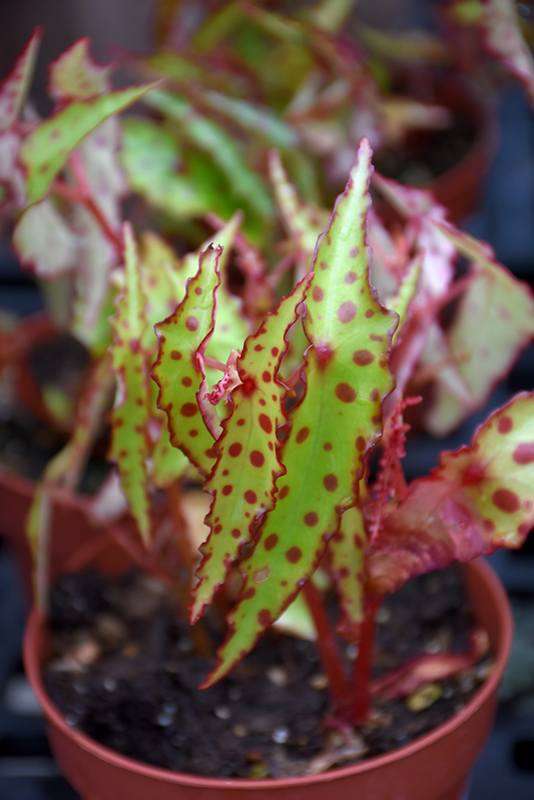Height: 18 inches Spread: 16 inches
Sunlight:
Other Names: Spotted Begonia, Polka Dot Begonia Description: A rare, exotic begonia with unusual, crimson spotted green leaves tapered at both ends; bright purple or white flowers are produced up to 3 times a year; must be provided a source of humidity; does not tolerate tap water; a great terrarium plant Features & Attributes Butterfly Begonia's attractive glossy pointy leaves emerge chartreuse, turning bluish-green in color with distinctive crimson spots and tinges of gold throughout the year on a plant with an upright spreading habit of growth. It features dainty clusters of white round flowers with purple overtones and buttery yellow eyes at the ends of the stems from early winter to late fall. The red stems are very effective and add to the plant's interest. This is an herbaceous evergreen houseplant with an upright spreading habit of growth. Its relatively fine texture sets it apart from other indoor plants with less refined foliage. This plant usually looks its best without pruning, although it will tolerate pruning. Planting & Growing When grown indoors, Butterfly Begonia can be expected to grow to be about 18 inches tall at maturity, with a spread of 16 inches. It grows at a medium rate, and under ideal conditions can be expected to live for approximately 10 years. This houseplant performs well in both bright or indirect sunlight and strong artificial light, and can therefore be situated in almost any well-lit room or location. It does best in average to evenly moist soil, but will not tolerate standing water. The surface of the soil shouldn't be allowed to dry out completely, and so you should expect to water this plant once and possibly even twice each week. Be aware that your particular watering schedule may vary depending on its location in the room, the pot size, plant size and other conditions; if in doubt, ask one of our experts in the store for advice. It will benefit from a regular feeding with a general-purpose fertilizer with every second or third watering. It is particular about its soil conditions, with a strong preference for rich, acidic soil. Contact the store for specific recommendations on pre-mixed potting soil for this plant. There are many factors that will affect the ultimate height, spread and overall performance of a plant when grown indoors; among them, the size of the pot it's growing in, the amount of light it receives, watering frequency, the pruning regimen and repotting schedule. Use the information described here as a guideline only; individual performance can and will vary. Please contact the store to speak with one of our experts if you are interested in further details concerning recommendations on pot size, watering, pruning, repotting, etc. -- THIS IS A HOUSEPLANT AND IS NOT MEANT TO SURVIVE THE WINTER OUTDOORS IN OUR CLIMATE --![]()
![]()
![]()
![]()
![]()
![]()
![]()
![]()
![]()
![]()
![]()
![]()
![]()
Characteristics
Applications
Ornamental Features
This guide is an online resource representing many of the varieties that we carry over the course of the season, and is intended for informational purposes only. Inventory varies seasonally, so we cannot guarantee that every plant will be in stock at all times - please contact the store directly for current availability. It does not include our entire selection of plants, so be sure to visit our store to see varieties that may not be represented on this list.


